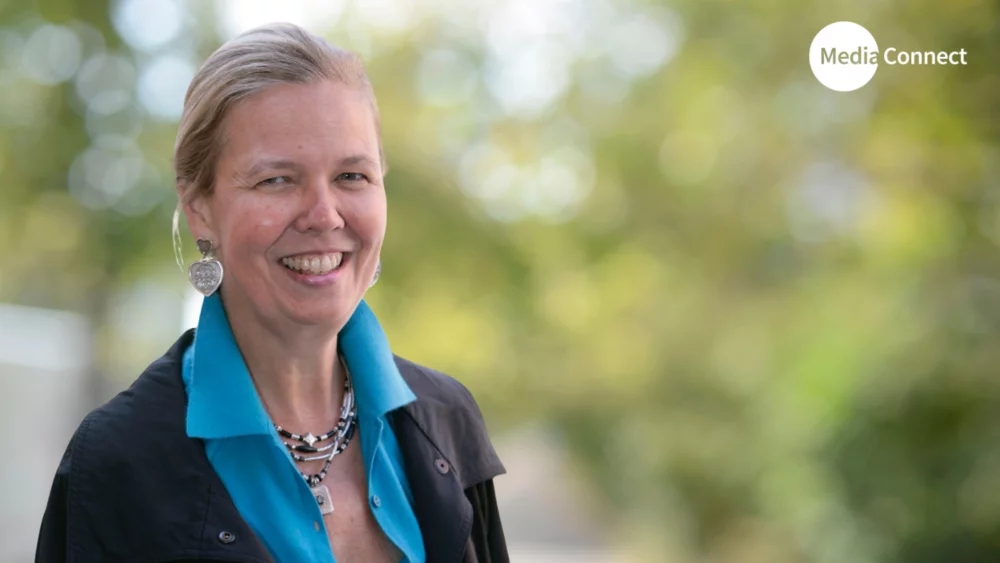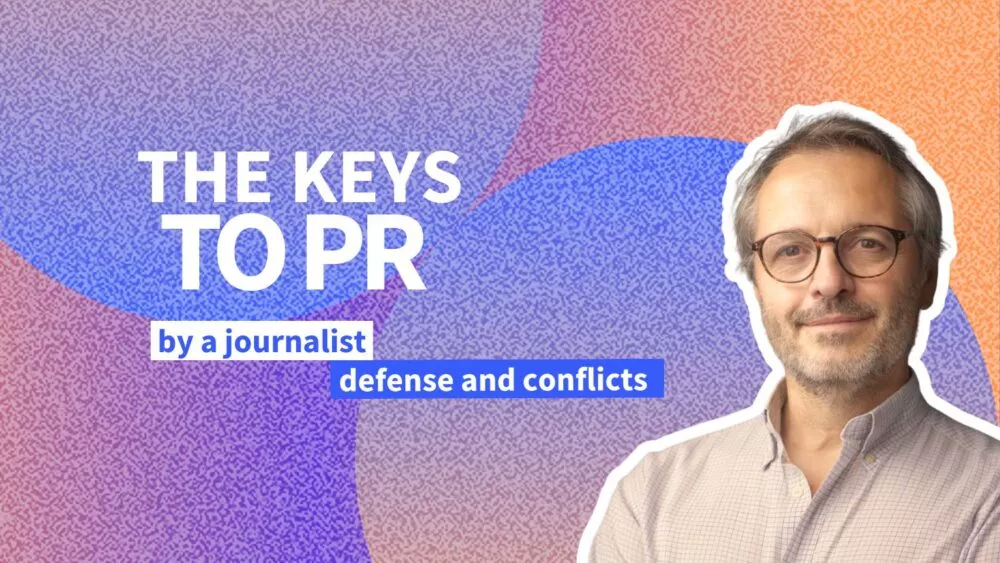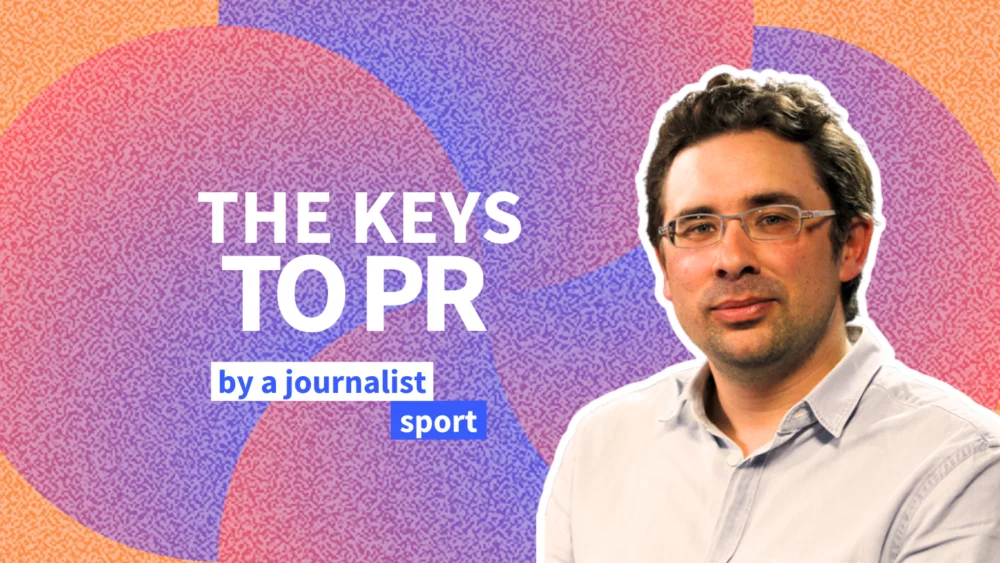What exactly does media training at Havas involve?
First, we do preparatory work with the company’s communications department to identify their exact needs. Whether it’s about an announcement, a restructuring plan, or a new product launch, everything starts with in-depth work on the message the trainee wants to convey.
The form comes second. The better the client masters their message, the better the form becomes. We work together to adapt the delivery to the format, because obviously, you don’t speak the same way in print as you do on the radio. That’s how clients practice mock interviews, public speaking, or go on stage in our amphitheater to work on gestures, stage entrance, and audience engagement. All sessions are recorded and then reviewed with the client. This immediate practice helps them test their message with an audience. At Havas, each media training session lasts two and a half hours.
To assist us, we sometimes work with journalists. Some clients request a TV or radio personality. It reassures them and puts them in a real-life scenario—like a bull facing a matador. Of course, everything said within these walls remains confidential. Trust is essential. We have an ethical charter. We are, in fact, the only ones in the group to have one.
What are your clients’ profiles?
Since launching "Havas Coaching & Messages" in 2002, I’ve trained over 6,000 people from very diverse sectors. Some came from agriculture, others from industry or services. Many were business leaders, from small companies to those listed on the CAC 40 or SBF 120. Not to mention heads of state and government I've worked with. Overall, I'd say more than 95% come from the corporate world, and 20% of the executives trained are women—a number that’s rising significantly.
Humanly speaking, I’ve coached autodidacts, people who stutter, are dyslexic, or have attention disorders. Some people are naturally more gifted than others. But no one needs to be a Rolls-Royce or Ferrari of public speaking. What matters is clearly defining your goal at the outset. Nowadays, communications departments provide messaging guidelines—the famous “EDLs.” But those often ignore the speaker’s personality and style. Yet a message is not just an idea—it must be adapted to the messenger.
What goals do clients have when they come to you?
Often, it’s about expressing themselves clearly and concisely. But the goals vary by profile—a CEO and a nonprofit leader won’t have the same priorities. Also, many private sector leaders want to make a lasting impression with their media appearances. Unlike politicians, they’re not frequently in the media spotlight, so each opportunity must count.
On March 16, 2023, you were interviewed by Élise Lucet for Cash Investigation’s 10th anniversary. Is it true Havas developed a specific module to prepare clients for her tough interviews?
Twelve of our clients have been interviewed by Élise Lucet. But no, we don’t have a special Cash Investigation training module. However, not all interviews are equal. There’s a kind of hierarchy—like in judo. A white-belt-level interview doesn’t require the same preparation as a green, blue, or black belt. Let’s just say Cash Investigation interviews are black belt, third dan. So, in such cases, we adapt and offer more robust preparation. Also, we asked Lucet’s team to allow us to record the interview as well. This helps prevent discrepancies between what was said and what’s broadcast after editing.
How do you measure the effectiveness of your training?
First, between arrival and departure, the trainee should feel they’ve improved. More broadly, I’d say there are two ways to measure results: one is “scientific,” the other more instinctive. The first is based on concrete indicators: press coverage or social media reactions after an intervention. The second is simply when the client comes back for more.
How much does a media training session cost?
The median price is €2,500 for a two-and-a-half-hour session. I stress median because I adjust rates based on the client’s profile—particularly for NGOs and startups.
What kind of trainers do you look for?
The first essential quality is kindness. Our clients are people opening themselves up. We’re not mentors—we’re here to guide them and help them take the stage. That’s rare because many people want to impose themselves. So we take time to find people who can support others. If you constantly want to speak instead of the client, you don’t belong with us—you should become a CEO or a politician instead.
And you? What made you want to be a trainer?
Nothing predisposed me to coaching. In the late 1990s, after three years at Havas as a classic consultant, I told Stéphane Fouks I was bored and thought it was a pity not to have direct contact with top executives. Usually, in communication plans, we only speak with the comms director. Media training, however, creates intimacy with the leader and builds a special bond with the agency. It also gives you insight into the company’s workings—directly from the leader, not filtered through someone else.
Today, what helps me most is my curiosity. It’s essential, because one week I might work with a bank, the next with a health organization, or a tech company.
What makes you a good media trainer, in your opinion?
Before joining Havas in 1998, I spent fifteen years working with Jacques Chirac, including two years as National Secretary of the RPR, until the 1997 dissolution. Back then, we were all trained in media speaking—using American methods, which were very new at the time.
When I moved into the corporate world, I was shocked to see how much better trained politicians were at public speaking than business leaders. Today, I think that’s reversed: companies now make a real effort to train their spokespeople on product positioning, financial stances, social plans, or crisis communication. It's now standard to be trained to speak—whether with media, politicians, or internally. My top priority is to understand who I’m dealing with in the first ten minutes. I always ask myself: who’s in front of me? A sheep, a fox, or a wolf? A sheep wants to do well. They’ll try to follow you and apply your techniques. A fox doesn’t play along. Then I ask why—maybe they’re questioning the trainer’s authority. That happened often early on; it was hard to assert myself. It’s easier now with some grey hair! A wolf is the alpha male or female. You need to convince them of your method’s value.
And you, are you a sheep, fox, or wolf?
Me? I’m a pit bull!








